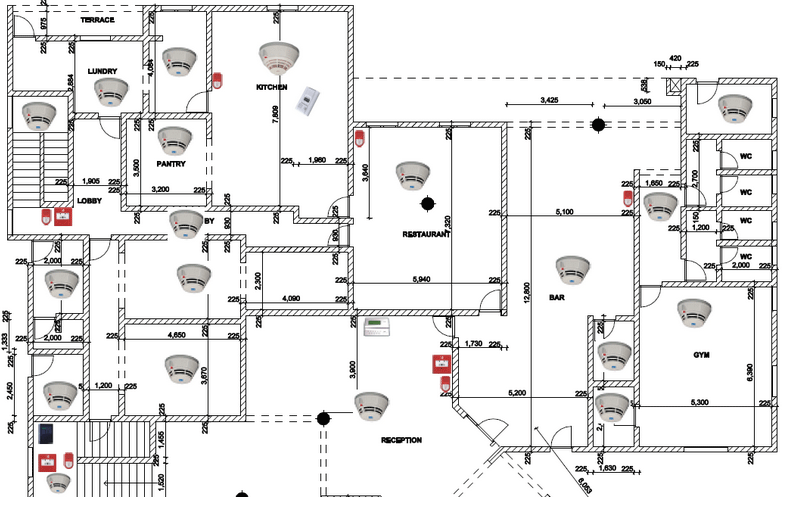5 steps to guide the design of a fire protection system
To successfully design a fire protection system, we must learn through the following 5 steps: 1: comply with the principles, 2: fire alarm system 3: alarm equipment 4: fire extinguishing system 5: maintenance fire protection system
When starting the design process, your primary goals with a new fire protection system are to protect people, reduce recovery time and protect property. Here are some steps you can follow to achieve all those goals and get a fire protection system that perfectly suits the needs of your business. Design guidelines for fire protection systems as follows:

5 bước hướng dẫn thiết kế hệ thống phòng cháy chữa cháy
Step 1: Comply with principles in fire protection system design
- What is the first thing you need to consider when designing a new fire protection system? Comply with current state regulations on fire protection switches.
- Pay attention to the legal issues of the system project, including time and money before starting the design to help reduce costs during the construction process.
Step 2: Fire protection system solution
- You will have to find out if your new fire protection system will have to provide you with the best smoke detection available today. The latest technology is allowing modern systems to become much smarter at detecting complex fires allowing the system to accurately distinguish between low and high danger.
Investing in a heat detector that is able to trigger an alarm before there is smoke will provide a higher level of protection. The difference between using a good fire detection system and a poor fire detection system is often the difference between being able to stop a small fire and a small fire growing into something much more dangerous.
>> 5 measures to prevent fires at home
Step 3: Fire alarm system equipment
- This step can be said to be the most important among the 5 steps guiding the design of fire protection systems today.
- A fire alarm system is an essential tool in any facility, warehouse, factory or building, and it is obviously an important part of your fire protection system. Alarms provide warning to those inside your building, but, more importantly, they also alert emergency personnel who need to respond to the situation as quickly as possible.
- Notification technology allows alarm systems to provide critical information to emergency responders, including the location and severity of the fire, so that the appropriate personnel and equipment can be dispatched. Move precisely where it is needed most. Alarms can help further by playing recorded messages instructing everyone in the building to exit in the safest way possible.
- In some cases, the alarm system may also be connected to the facility's ventilation system to help control smoke and resolve fire incidents more quickly.
Step 4: Fire suppression system
- When designing a fire suppression system, it is necessary to calculate which nozzles should be used that can provide early warning and be used effectively when extinguishing a fire.
- We need to pay attention to chemical, gasoline fires...
Step 5: System maintenance
- When designing the system, paying attention to future maintenance is extremely necessary to ensure convenience and save time and money.
- In order for the system to operate well every time a fire occurs, periodic maintenance is required about once a year to ensure stability and increase the longevity of the equipment. In summary: The above 5 steps to guide the design of a fire protection system that we share help you understand a few more things. We hope you can leave your comments and respectful suggestions.

Have 0 comment, evaluate about 5 steps to guide the design of a fire protection system
TVAdministratorsAdministrators
Welcome, honored guests. Please leave a comment, we will respond soon